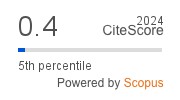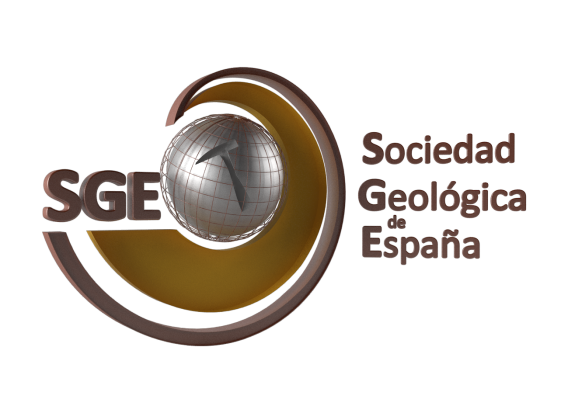La Fosa de Morés (Cordillera Ibérica): extensión triásica e inversión cenozoica
DOI:
https://doi.org/10.55407/geogaceta100821Palabras clave:
Extensión, Compresión, Triásico, Cordillera Ibérica, cubetaResumen
La Fosa de Morés (Rama Aragonesa de la Cordillera Ibérica) está rellena por materiales de edad triásica (facies germánica) que se superponen discordantes sobre materiales paleozoicos plegados y fracturados. La cuenca está delimitada por dos grandes fallas de dirección NW–SE, la falla normal de Purroy, invertida localmente, y la falla inversa de Inogés. Pliegues, cabalgamientos y fallas normales de dirección similar se observan dentro de la cuenca. Los cortes geológicos y los datos de estratificación y fracturación han permitido dar una interpretación de las diferentes estructuras de los márgenes de la cuenca. Una primera etapa extensional triásica dio lugar a fallas normales sinsedimentarias, como la falla de Purroy, y estructuras en horsts y grabens a escala mesoestructural. Una segunda etapa, de carácter compresivo, produjo en el Cenozoico la reactivación de fallas con componente inversa y la formación de pliegues.
Citas
Allmendinger, R.W., Cardozo, N., y Fisher, D.M. (2013). Structural Geology Algorithms: Vectors and Tensors. Cambridge University Press, Cambridge, 304 p.
Anderson, E.M. (1951). The dynamics of faulting and dike formation with application to Britain. Oliver and Boyd, 2ª Edición, Edinburgh, 133147.
Aragonés, E., Hernández, A., Ramirez, J. y Aguilar, M. J. (1980). Mapa Geológico de España. 1:50.000, hoja nº 410 (La Almunia de Doña Godina) y memoria. IGME, Madrid, 65 p.
Capote, R., Muñoz, J.A., Simón, J.L. (coords.), Liesa, L.C. y Arlegui, L.E. (2002). En: The Geology of Spain (W. Gibbons y T. Moreno, Eds.). The Geological Society, London, 367-400.
Casas, A., Aurell, M., Revuelto, C., Calvín, P., Simón, J.L., Pueyo, O., Pocoví, A. y Marcén, M. (2017). Revista de la Sociedad Geológica de España 30(2), 51-64. https://sge.usal.es/archivos/REV/30(2)/RSGE30(2)_p_51_64.pdf
Casas, A., Marcén, M., Calvín, P., Gil, A., Román, T. y Pocoví, A. (2016). Geo-Temas 16(2), 495-498.
Hernández, A., Aragonés, E., Ramirez, J. y Aguilar, M.J. (1981). Mapa Geológico de España. 1:50.000, hoja nº409 (Calatayud) y memoria. IGME, Madrid, 44 p.
Liesa, C.L., Casas, A.M. y Simón, J.L. (2018). Revista de la Sociedad Geológica de España 31(2), 23-50. https://sge.usal.es/archivos/REV/31(2)/RSGE31(2)_p_23_50.pdf
Liesa, C.L. y Simón, J.L. (2009). Tectonophysics 474, 144-159. https://doi.org/10.1016/j.tecto.2009.02.002
Marcén Albero, M. y Román Berdiel, M.T. (2015). Geogaceta 58, 83-86. https://sge.usal.es/archivos/geogacetas/geo58/geo58pag79-82.pdf
Descargas
Publicado
Cómo citar
Número
Sección
Licencia
Derechos de autor 2024 Raúl Lázaro-González, Carlos L. Liesa

Esta obra está bajo una licencia internacional Creative Commons Atribución-NoComercial-CompartirIgual 4.0.
Hasta el año 2023 el autor/a cedía el copyright (“derechos de autor”) a la Sociedad Geológica de España, pero desde el 2024 el/la autor/a conserva los derechos de autor y concede a la Sociedad Geológica de España el derecho de la primera publicación y de manera no exclusiva cede la distribución de cada artículo en todos los soportes actuales o futuros, al mismo tiempo que ceden, también de manera no exclusiva, los derechos comerciales para la distribución de la versión impresa de Geogaceta. Por otra parte, los artículos, a partir del año 2023, están disponibles simultáneamente a su publicación, bajo la licencia Creative Commons CC BY-NC-SA 4.0, que permite copiar, transformar el trabajo, pero si se distribuye transformándolo, el nuevo trabajo debe distribuirse bajo la misma licencia, y nunca con propósitos comerciales, al tiempo que se reconoce la autoría y la publicación original en GEOGACETA, de tal manera que el único rol del copyright es dar a los autores el control sobre la integridad de sus trabajos y el derecho de ser adecuadamente reconocidos y citados.









